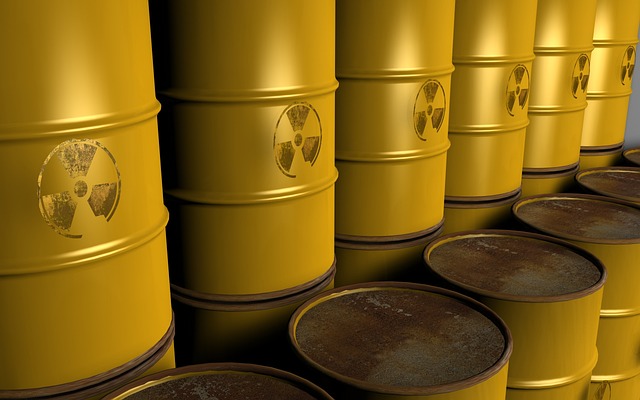From Batteries to Beyond: Exploring Innovative Energy Storage Technologies
In an age increasingly defined by technological advancement and environmental concern, energy storage plays a crucial role in defining our future. As the world transitions toward sustainable energy sources, the development of efficient energy storage technologies is of paramount importance. This article takes an in-depth look at the current landscape of energy storage, exploring everything from conventional battery systems to ground-breaking innovations that may define the future.
The Importance of Energy Storage
Energy storage systems are pivotal in integrating renewable energy sources such as wind and solar power into the electric grid. These systems allow for energy to be stored during periods of low demand and released during peak consumption times, thereby enhancing grid stability and reducing reliance on fossil fuels. Energy storage is not just vital for renewable energy integration; it also plays a key role in numerous applications, including electric vehicles, portable electronics, and demand response strategies.
Traditional Energy Storage Technologies
Before diving into the latest innovations, it is essential to understand the traditional forms of energy storage that currently dominate the market. The most common technologies include:
Lithium-ion Batteries: Lithium-ion (Li-ion) batteries are the most prevalent form of energy storage today. They are widely used in consumer electronics, electric vehicles, and grid storage due to their high energy density, relatively low self-discharge rates, and moderate costs. However, challenges such as limited capacity, degradation over time, and environmental concerns regarding lithium extraction remain significant.
Lead-Acid Batteries: Lead-acid batteries have been around for over a century and are still commonly used for applications requiring steady current over a long time. Their lower efficiency and shorter lifespan compared to batteries like Li-ion make them less favorable for high-performance applications. Nevertheless, their cost-effectiveness continues to make them a choice for many energy storage systems.
Flow Batteries: Flow batteries, which utilize liquid electrolytes in external tanks, offer scalability and prolonged discharge times. While they can provide substantial power, their energy density is lower than lithium-ion batteries, making them more suitable for large-scale energy storage applications, such as grid-level storage.
Emerging Innovations in Energy Storage
The ever-evolving landscape of energy storage technologies has birthed several innovative solutions designed to address the limitations of traditional batteries, allowing for more sustainable and efficient energy usage. Some of the most intriguing advancements include:
Solid-State Batteries
Solid-state batteries represent a significant leap forward from lithium-ion technology. Utilizing solid electrolytes instead of liquid ones, these batteries promise enhanced safety, increased energy density, and longer life cycles. Manufacturers are actively developing solid-state batteries for electric vehicles, as they can potentially double the range without compromising safety or performance.
Hydrogen Fuel Cells
Hydrogen fuel cells convert chemical energy from hydrogen into electricity, generating only water vapor as a byproduct. This technology has received renewed interest as a clean energy solution, especially for uses in transportation and stationary energy generation. Hydrogen’s high energy density, combined with its potential for storage and transportation, makes it a compelling alternative to traditional battery storage.
Supercapacitors
Supercapacitors offer a unique approach to energy storage, bridging the gap between traditional capacitors and conventional batteries. They excel at rapid charge and discharge cycles, making them effective for applications requiring quick bursts of energy. While they typically have lower energy density, their ability to last a long time without degradation makes them an attractive option for many electricity storage needs.
Gravity Energy Storage
Gravity energy storage is a fascinating concept that leverages gravitational potential energy as a means of energy storage. This technology operates by lifting large weights using excess energy and then releasing that energy by allowing the weights to descend. While still in the experimental phase, gravity energy storage systems have the advantage of being environmentally friendly and using widely available materials.
Thermal Energy Storage
Thermal energy storage systems store energy in the form of heat rather than electricity. Common methods include molten salt, ice storage, and phase change materials. These systems offer beneficial applications by allowing excess energy produced by solar thermal plants to be stored and used when needed. The ability to integrate with existing infrastructures is a significant advantage of thermal storage technologies.
Integrating Energy Storage with Smart Grids
The rise of smart grids has revolutionized how energy is distributed and consumed. Smart grids utilize advanced communication technologies to optimize electricity usage and implement demand response strategies. Energy storage systems can play a vital role in smart grid infrastructures, allowing for real-time energy management that benefits both energy providers and consumers.
Energy storage can transform the way electricity flows on the grid by providing ancillary services like frequency regulation, voltage support, and peak load management. By integrating storage with smart technologies, the overall efficiency of energy use can be improved, helping to reduce waste and enhance grid reliability.
Challenges for Adoption
Despite the tremendous potential for innovative energy storage technologies, several challenges hinder their widespread adoption. These barriers include:
Cost: Many advanced storage systems still come with high initial costs compared to established technologies. The economic viability of new technologies needs to be demonstrated through large-scale deployment and research to drive down costs.
Regulatory Hurdles: Regulatory frameworks and standards for energy storage technologies are still developing. Navigating the legal landscape can be daunting for new market entrants, potentially slowing down innovation and deployment.
Technological Maturity: Some technologies, like solid-state batteries and gravity energy storage, are still in the research and development stages. Moving these innovations from labs to commercial viability requires significant investment and time.
The Future of Energy Storage
The future of energy storage is intertwined with the broader goals of sustainability and energy transition. As the demand for renewable energy grows, so too will the need for robust, reliable energy storage solutions. From advanced batteries to novel methods like gravity storage and hydrogen fuel cells, the possibilities are vast.
Research and development continue to push the envelope, with governments, corporations, and academic institutions racing to unveil new technologies. As our understanding of materials science, chemistry, and engineering deepens, we may soon witness transformative breakthroughs in energy storage. The fusion of emerging technologies with existing infrastructures could herald a new era of energy security and sustainability.
Conclusion
From lithium-ion batteries to cutting-edge innovations like solid-state systems and hydrogen fuel cells, energy storage technologies are at the forefront of the transition to a sustainable energy future. As our reliance on intermittent renewable energy sources increases, the necessity for effective energy storage solutions will only amplify. However, overcoming the current challenges requires concerted efforts across sectors, heralding an exciting frontier for researchers, engineers, and innovators. The evolution of energy storage technologies promises not only to revolutionize the way we consume energy but also to define our responses to pressing global environmental challenges.



